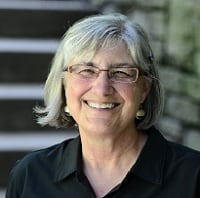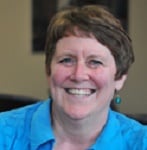We were fortunate to have Sandy Heidemann, M.S. and Beth Menninga, M.A.Ed. present a webinar about, Teaching and Growing in the Midst of Change on October 12, 2016. Many of the participants had questions that we were unable to ask the presenters. They were kind enough to answer them and they are posted below. Here is a link to the recording: Teaching and Growing in the Midst of Change: Learn, Practice, Share, and Model
Click here to: Download the PowerPoint Slides
Handout: TEACHING AND GROWING IN THE MIDST OF CHANGE: LEARN, PRACTICE, SHARE & MODEL
_____________________________________________________________________________________________________________________________________
Q.1. Is there research on the strengths from the broad diversity of the early childhood field workforce that is much more representative of the children and families than the teaching staff in public elementary education? Are there implications for keeping entry into the ECE field as a low benchmark with graduated responsibilities/expectations and much greater investments and incentives to develop as a professional? [fusion_builder_container hundred_percent=”yes” overflow=”visible”][fusion_builder_row][fusion_builder_column type=”1_1″ background_position=”left top” background_color=”” border_size=”” border_color=”” border_style=”solid” spacing=”yes” background_image=”” background_repeat=”no-repeat” padding=”” margin_top=”0px” margin_bottom=”0px” class=”” id=”” animation_type=”” animation_speed=”0.3″ animation_direction=”left” hide_on_mobile=”no” center_content=”no” min_height=”none”][Nancy J]
A.1. We don’t know of any research on the first question, but it sounds like it could be great information for our field to look into. Your second question raises a related current controversy in our field as we strive to define ourselves as a profession. There have been research studies into the effectiveness of teachers with four year degrees vs those without, including CDAs, without compelling results (there are small effect sizes showing a B.A. is beneficial but the findings we’ve read aren’t strongly linking a B.A. in and of itself to better outcomes). There is some indication that teachers with an education background that includes an early childhood development emphasis (whether in a Bachelor’s program or a CDA) do best. [Features of Pre-Kindergarten Programs, Classrooms, and Teachers: Do They Predict Observed Classroom Quality and Child-Teacher Interactions? Pianta, Howes, Burchinal, Bryant, Clifford, Early, and Barbarin (2005)] This raises questions about cost/benefit: if we require a B.A. as a minimum degree to teach in early childhood classrooms, for example, would benefits outweigh costs? Or are there other more cost-effective ways to improve quality and children’s experiences in early care and education settings?
***************************************************************
Q.2. Did you use video – both of excellent lessons for teachers to watch other teachers, and videoing the teacher you’re working with so that she/he can see and review their interactions with children? [Nancy J]
A.2. In one of the two projects, we used a bit of video sharing among teachers at one site. We used the Head Start “Steps to Success” tool kit as a great resource for watching early literacy focused coaching interactions with our literacy mentors. Near the end of the second project we used some videos of other teachers (we recommend the resources at Erikson’s Early Math Collaborative). Technology has advanced so quickly in the past few years that we would find it much simpler to do so today as it is more accessible (for example smart phone cameras) to a broader range of teaching staff.
***************************************************************
Q.3 We serve a population of children with trauma in their lives My biggest fear is as a coach I don’t give teachers sufficient tools to engage these children and to improve their outcomes [Chrissy l]
A.3. This question requires a much longer answer than we can give here. But here are a few thoughts. Initially, what teachers need to give children who have experienced trauma is not a complicated idea. Provide a consistent, predictable schedule with routines that children can learn. Make a visual schedule and warn them about what is coming next. Always prioritize your relationship with the children, letting them know you are a safe person who values them. Although working on social-emotional issues is paramount, also provide stimulating activities (ie early math/literacy) that build their self-esteem. We found behavior problems were reduced when teachers were able to engage children in the early math games. Always connect teachers to resources like ACES trainings that can build their skills and confidence. And one more thought, support them. It is tough to see children and families suffering and teachers can feel at sea. They need other adults to listen and offer encouragement.
***************************************************************
Q.4. How can I connect with both parents in a positive way that will benefit the child, especially if the parents are no longer together. [stephanie d]
A.4. When parents are no longer together, make sure you communicate directly with both parents. It is easy to assume they are communicating with each other, but they often have so many details to cover and there may be tension between them. Build in family nights that provide fun activities to share both at the event and at home. At our projects’ family nights, the coaches and teachers had parents and children make early math games that they could take home and play together. Parents were very enthusiastic!
***************************************************************
Q.5. If a teacher doesn’t have a coach, how can they get feedback when they practice new lesson on pre-math? [Nancy J]
A.5. They could look into partnering with a colleague (in their teaching team or in another classroom) who is also interested in expanding their early math repertoire. [Just a little side note: we prefer to use the term early math instead of pre-math. They are already working on the basic underpinnings of math, even at early ages.] Again, with smart phones they can film or even just sound record themselves to do the work with another person or by themselves. We do find it helps a lot to have another person so you can “think out loud” together, support and encourage each other and gain fresh ideas and perspectives. Social Media sites such as Pinterest provide platforms for idea sharing (perhaps not problem solving).
***************************************************************
Q.6. Do you have suggestions for working with directors to encourage and support them to promote teachers in their program as leaders? [Nancy J]
A.6. Directors can ask teachers to share ideas at meetings, build in mentorships of more experienced teachers with less experiences teachers, and encourage their staff to present at regional conferences. Teachers often have opportunities to submit articles to EC newsletters. It is important that directors respect their staff and lift them up as competent. By increasing teachers’ confidence, they build a learning community that supports teachers, children and families.
***************************************************************
Q.7. I am a UCF student majoring in Elementary Education and minoring in ESOL. I am interning at a school that is from 6 weeks through 1st grade. We have a high population of ELLs. What is your experience with helping the teachers guide those students? [Sarah D]
A.7. We always built in thinking about dual language learners as part of training/reflection. We found teachers often believed children should begin speaking immediately so we emphasized the stages of learning a language. For example, some teachers thought an ELL student had a language delay because they weren’t speaking. When they learned about the “silent period” in the beginning of language acquisition, they were less worried. Training helped them understand the process children were going through and how they could support them.
[/fusion_builder_column][/fusion_builder_row][/fusion_builder_container]





